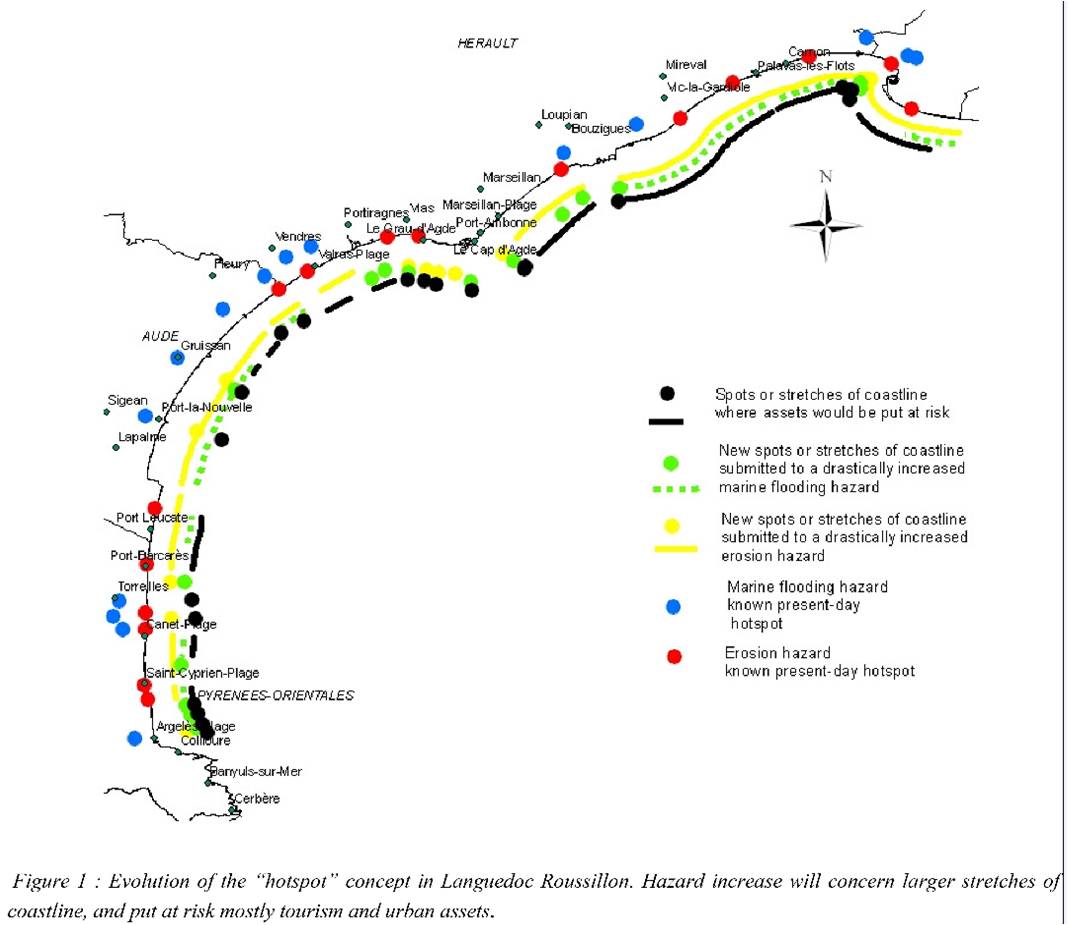Difference between revisions of "French case studies: RESPONSE project"
m |
|||
| Line 19: | Line 19: | ||
C.Vinchon, S.Aubie, Y.Balouin, L.Closset, M.Garcin,D.Idier, C.Mallet, 2007, Anticipate response of climate | C.Vinchon, S.Aubie, Y.Balouin, L.Closset, M.Garcin,D.Idier, C.Mallet, 2007, Anticipate response of climate | ||
change on coastal risks at regional scale, in Aquitaine and Languedoc Roussillon (France). Submitted to Ocean and Coastal Management Journal. | change on coastal risks at regional scale, in Aquitaine and Languedoc Roussillon (France). Submitted to Ocean and Coastal Management Journal. | ||
| + | |||
| + | {{author | ||
| + | |AuthorID= | ||
| + | |AuthorName= Idier, Deborah}} | ||
Revision as of 15:21, 31 May 2007
LIFE Environment/RESPONSE project . Impact of climate change on coastal risks.
Application to Aquitaine and Languedoc Roussillon (France)
C. VINCHON, D.IDIER (BRGM-France)
LIFE Environment /RESPONSE (2003-2006) aimed to demonstrate and map, at regional scale, the impact of climate change on coastal risks (erosion and marine flooding), by anticipating the response to regional climatic change scenarios of coastal systems in 2100. Coastline systems were described by its geomorphology, coastal processes, known hazardous events and existing defences. Trends of changes in erosion and marine flooding of each system were evaluated by expert advices and mapped. Crossing this information with assets distribution allowed mapping where assets were likely to be put at risk, and underlining critical points in regards to coastal risk and climate change. Application on Aquitaine and Languedoc Roussillon (France) assessed the likely increase of the coastal risks. Weight of geomorphology and existing settlements development was underlined. In Aquitaine, the large dune systems and undertidal sandbars will give a relative resilience capacity to erosion, except on low lying spots and coastal outlets, where urbanisation is concentrated. The urbanised cliff-lined coast of Pays Basque, already vulnerable, will face an increased vulnerability. In Languedoc Roussillon (figure 1), the low lying “lidos” systems will be submitted to erosion and marine flooding increased risks, whereas the hard rock cliff-lined coast of Pyrénées Orientales should resist, apart from pocket beaches where the sediment storage might not be sufficient to help beach erosion resilience.
This study pointed out the need to have an integrated approach of coastal hazards and risks, at least at a sedimentary cell scale. The results also emphasised the need of better knowledge on physical resilience capacity of the coast, and on assets at stake values and vulnerability processes.
References
C. Vinchon, D. Idier, M. Garcin, Y. Balouin, C. Mallet S Aubie L. Closset 2006, Response of the Coastline to Climate Change. Specific Report for the RESPONSE LIFE–Environment Project: Evolution of coastal risks (Erosion and marine flooding) on the Aquitaine and Languedoc-Roussillon pilot regions, BRGM/RP 54718-FR,July 2006
C.Vinchon, S.Aubie, Y.Balouin, L.Closset, M.Garcin,D.Idier, C.Mallet, 2007, Anticipate response of climate change on coastal risks at regional scale, in Aquitaine and Languedoc Roussillon (France). Submitted to Ocean and Coastal Management Journal.
Please note that others may also have edited the contents of this article.
|
[[Category:Articles by {{{AuthorFullName}}}]]
